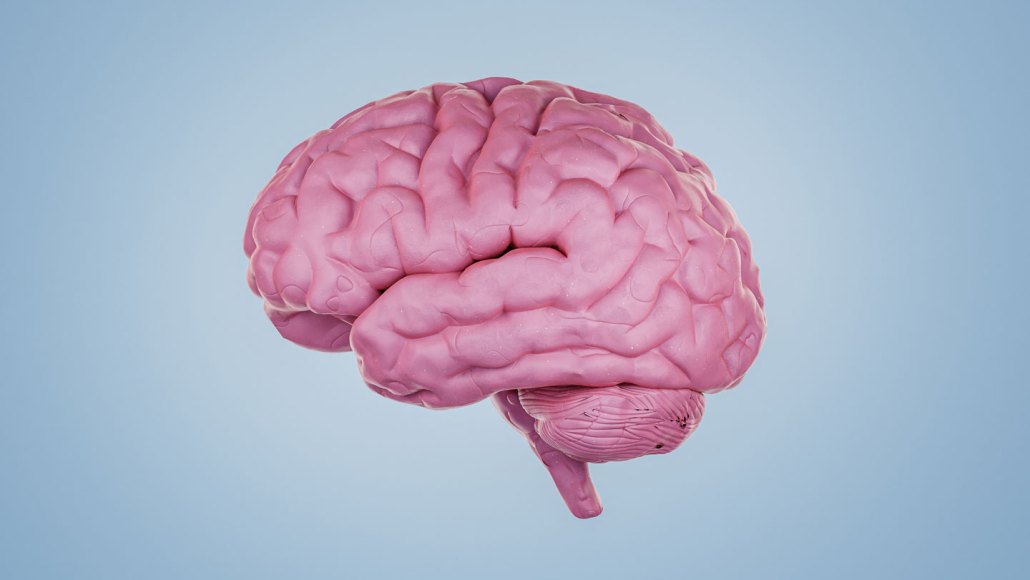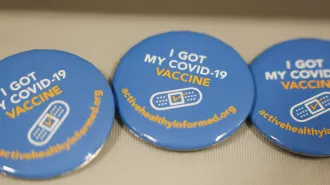Protein signatures may one day tell brain diseases apart before symptoms
Distinguishing between Alzheimer’s, Parkinson’s and some dementias could aid early treatment

Proteins that flow through blood and cerebral spinal fluid carry signatures of brain and nerve diseases such as Alzheimer's, Parkinson's, ALS and forms of dementia, a large new study finds.
OsakaWayne Studios/Getty Images
A large-scale study of proteins in blood and cerebrospinal fluid could pave the way for improved blood tests to diagnose multiple brain diseases — and potential early warning signs of disease risk — researchers report July 15 in several papers in Nature Medicine and Nature Aging.
Proteins do much of the work to keep cells and bodies working. Trouble with these building blocks can spell disease; protein misfolding, for instance, links many brain diseases.
The results, drawn from samples from 18,645 people, reveal biochemical fingerprints of neurodegenerative disorders such as Alzheimer’s, Parkinson’s, frontotemporal dementia and amyotrophic lateral sclerosis, or ALS. These tests could also help identify disease subtypes and track progression before symptoms emerge.
Such well-validated and robust results are “more likely to ultimately translate into something that’s medically actionable,” says Andrew Saykin, director of the Indiana Alzheimer’s Disease Research Center in Indianapolis, which contributed samples to the effort.
New clues to the role of an Alzheimer’s gene
In one key finding, researchers discovered that individuals carrying a form of the APOE gene called APOE4 — the biggest genetic risk factor for developing Alzheimer’s — share a blood signature regardless of diagnosis. That signature appeared not only in people with Alzheimer’s but also in those with other brain diseases or no neurodegeneration at all, neuroscientist Caitlin Finney and colleagues report in Nature Medicine. The APOE4 protein signature involves proteins that respond to infection and inflammation, hinting at how the variant predisposes carriers to brain diseases. It also suggests that the APOE4 protein may be involved in the early stages of multiple diseases.
Although all the diseases ultimately affect the brain, their early roots are seeded in the body, says Finney, of the Westmead Institute for Medical Research at the University of Sydney. Too much inflammation may set the stage for brain changes that combine with genetics, lifestyle, chemical exposures and other experiences to tip the brain into developing specific diseases, she says.
To see whether APOE4’s immune function is a cause or consequence of brain diseases, Finney and colleagues grew stem cells — some from a person with the APOE4 variant, some from an individual without it — into brain organoids complete with immune cells called microglia, which have been implicated in Alzheimer’s disease. The organoids with the variant showed signs of inflammation before the accumulation of Alzheimer’s hallmark proteins, tau and amyloid beta, the researchers report July 15 in a paper posted to Research Square. Those results have not yet been peer-reviewed.
If the results hold up, they may point to new preventive therapies aimed at controlling inflammation. It may also help explain why the shingles vaccine lowers the risk of developing dementia, protecting people from a bout with the inflammatory disease, Finney says.
Telling different brain diseases apart
Another analysis points to the role the rest of the body plays in development of brain diseases. Different diseases were associated with different patterns of aging across organs, researchers report in Nature Medicine. In particular, “brain-specific aging is not what you see in Parkinson’s. It’s actually quite different from Alzheimer’s, where you do see [brain aging], so I think that was a surprise for many of us,” says Farhad Imam, Director of Health & Life Sciences at Gates Ventures in Kirkland, Wash.
One of the studies also found both shared and unique biochemical fingerprints across neurodegenerative diseases, neuroscientist Carlos Cruchaga and colleagues report in Nature Medicine. These fingerprints may help distinguish ALS, frontotemporal dementia, Alzheimer’s and Parkinson’s from one another and perhaps identify subtypes.
“Some of these changes are before the clinical symptoms and can be used to identify people [at] risk,” says Cruchaga, of Washington University School of Medicine in St. Louis.
A shared mission
The work stems from the Global Neurodegeneration Proteomics Consortium, or GNPC, a worldwide public-private partnership formed in 2023 to study proteins in people with degenerative brain and nerve diseases.
The GNPC gathered samples collected from more than 20 studies across the United States and Europe. Many samples came from the same individuals over time, giving researchers a glimpse at how proteins change. The project’s “real power is in validation,” says Kyle Travaglini, a neuroscientist at the Allen Institute for Brain Science in Seattle who was not involved in the work. Seeing samples from different patient cohorts produce the same answer again and again gives confidence that the results are correct.
“Maybe we can come up with one treatment that will help multiple people with multiple different diseases.”
neuroscientist Caitlin Finney
The consortium came together during the COVID-19 pandemic, when researchers couldn’t bring patients in for clinical trials. But “what we [could] do is go into freezers with blood samples that have already been collected and generate fingerprints of disease by studying those samples in higher detail than we ever have before,” says Imam, GNPC’s leader.
Researchers at Johnson & Johnson had already started analyzing archived patient samples. Gates Ventures’ managing director, Niranjan Bose, struck a deal with Simon Lovestone of J&J to match funding if the company opened their data to the scientific community, Imam says. “So that was a handshake and yes,” and the partnership was born.
Previous projects concentrated on just one disease at a time — mainly Alzheimer’s — making it difficult to spot common problems across disorders, Finney says. But, she adds, the diseases do have at least one thing in common. “Cells are dying. And mechanistically and biologically, there will be overlap in the nature which they die.” If researchers can find those overlaps, she says, “maybe we can come up with one treatment that will help multiple people with multiple different diseases.”
The database may help facilitate that. Rather than having to start with studies in mice, the GNPC samples already come from patients and have all been analyzed using the same method, making all the results directly comparable. “That’s a huge help to scientists like me that do drug discovery research,” Claudia Marino, a neuroscientist at the University of Texas Medical Branch in Galveston who was not involved in the consortium. She’s among the scientists who plan to consult the database as soon as it becomes available to test some of her own hypotheses.
While the U.S. Food and Drug Administration approved a blood test that can diagnose Alzheimer’s disease in May, it remains difficult to access because it requires radioactive materials and a synchrotron, Imam says. No blood tests are currently available for other neurodegenerative diseases, but that could change in a few years if the initial results from the GNPC analysis hold up.
In the meantime, more discoveries may be on the way, Imam says. A second phase of the consortium is already bringing in researchers and samples from patients in South America, South Asia, Africa and Oceania.







